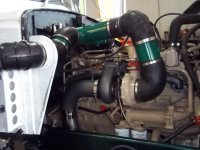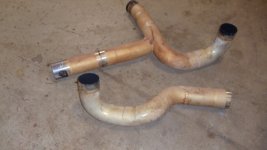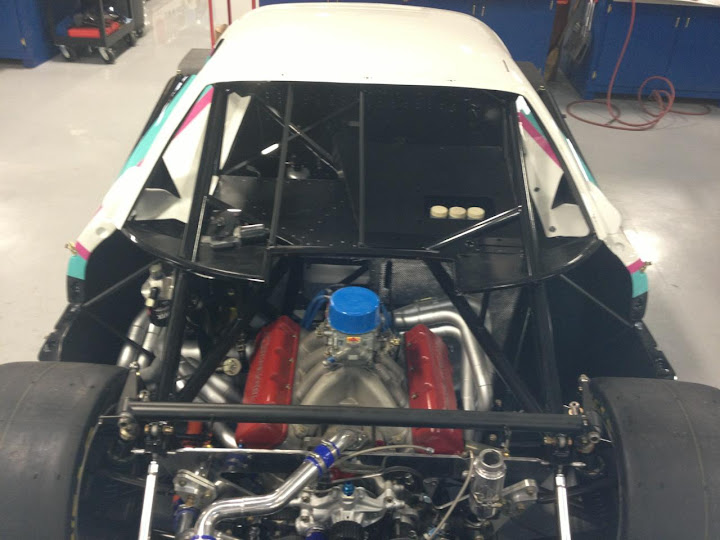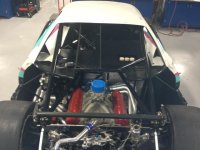-
There were many reasons for the change of the site software, the biggest was security. The age of the old software also meant no server updates for certain programs. There are many benefits to the new software, one of the biggest is the mobile functionality. Ill fix up some stuff in the coming days, we'll also try to get some of the old addons back or the data imported back into the site like the garage. To create a thread or to reply with a post is basically the same as it was in the prior software. The default style of the site is light colored, but i temporarily added a darker colored style, to change you can find a link at the bottom of the site.
You are using an out of date browser. It may not display this or other websites correctly.
You should upgrade or use an alternative browser.
You should upgrade or use an alternative browser.
ceramic coating
- Thread starter cuznjohn
- Start date
CCPcoatings
New member
Look here for wraps....http://www.centuryperformance.com/exhaust-header-heat-wraps-do-not-use.html....opcorn:
The article is a little over dramatic to say the least, not to mention the temp readings from the coated headers are purposely MISLEADING.... Jet Hot and the like historically use an IR temp gun to gauge surface temps which unless they are "calibrated" for a reflective surface are USELESS and will register much less than the actual temp.
We've worked with headers / exhaust systems ranging from 5hp mini bikes to 4500HP+ twin turbo shoot out cars for close to 15 years. There are "extremes" in any application that tend to be the EXCEPTION and not the rule. Most headers / exhaust systems that experience cracks or fatigue are the result of bad welds, insufficient material, and or a combination of both in a stressed or structural application. i.e. various exhaust components are being used in a structural manner and not properly speced.
There is some validity to the advantages to coating the pipes in that Ceramic Coating functions as both a thermal barrier and also dissipates heat from its surface. In that the Spyder is a relatively mild application i.e. normally aspirated, open air and seemingly constructed from SS, you have very little to worry about. Keep in mind if these pipes are in fact SS, that is the primary source of your thermal issues. SS is great for thermal shock and a strong substrate for exhaust components but because it is denser than mild steel it keeps much of it heat on its surface much like a heat sink and it takes longer to dissipate if not aided by any coatings.
Magdave
New member
If you read the article I posted it tells you why you should NOT use a wrap but it is your bike:thumbup:search in this forum for exhaust wrapping 2 , under midlifecrises member -he has pictures ! I will post some of my own at the end of the week. :ani29: in shop ...:banghead:
I believe that the wraps are good to protect various underhood 'items' from heat, but not for the use of holding the heat in the header. For example: you can use the wrapping for the protection of fuel and oil lines, wiring, covering a starter motor, etc.
Cool air needs to be around the header, and insulating it with a wrap to hold exhaust heat in makes the header material surface temperatures reach near molten levels. When you wrap the header you trap the heat in the header, but also suffocate the material that needs to breathe to dissipate heat for it's own survival.
This may not be totally true for a 100hp engine but if NASCAR experts say this I tend to think about it.
Last edited:
Magdave
New member
Quote from frank3 on 8/07/2013... "FYI, removed both headers 2 years ago on my 2010 RT-S, had them ceramic coated. Coating didn't make much of a difference so this year I removed the headers again and wrapped them in 1" with a much better reduction in heat. Don't bother with the ceramic JMO. "
Wonder who did the coating? If you read the article links I posted and it was one of them I do not believe it. Rattle can sprays may not help much but getting them done professionally (watch the video) ensures the proper coating thickness crucial to getting the desired thickness. JMHO
Magdave
New member
The article is a little over dramatic to say the least, not to mention the temp readings from the coated headers are purposely MISLEADING.... Jet Hot and the like historically use an IR temp gun to gauge surface temps which unless they are "calibrated" for a reflective surface are USELESS and will register much less than the actual temp.
We've worked with headers / exhaust systems ranging from 5hp mini bikes to 4500HP+ twin turbo shoot out cars for close to 15 years. There are "extremes" in any application that tend to be the EXCEPTION and not the rule. Most headers / exhaust systems that experience cracks or fatigue are the result of bad welds, insufficient material, and or a combination of both in a stressed or structural application. i.e. various exhaust components are being used in a structural manner and not properly speced.
There is some validity to the advantages to coating the pipes in that Ceramic Coating functions as both a thermal barrier and also dissipates heat from its surface. In that the Spyder is a relatively mild application i.e. normally aspirated, open air and seemingly constructed from SS, you have very little to worry about. Keep in mind if these pipes are in fact SS, that is the primary source of your thermal issues. SS is great for thermal shock and a strong substrate for exhaust components but because it is denser than mild steel it keeps much of it heat on its surface much like a heat sink and it takes longer to dissipate if not aided by any coatings.
You may be right about the stainless but
Examine these actual test numbers:
- Mild Steel (1010) uncoated header exposed to continuous 1200º F. in normal air will have a weight loss percentage of roughly 25% with only 10 hours use at this temperature.
- Stainless Steel (410) uncoated header will have roughly 8% weight loss in the same 10 hour period.
- A coated mild steel header will have NO weight loss at temperatures up to 1200º F. In fact it will actually gain a bit of weight! Between 1300º F and 1600º F the coating will begin to show signs of mud cracking or like the look of lacquer checking. However, limited diffusion takes place between the coating and the substrate, producing a very thin film of iron aluminide, which continues to inhibit oxidation
So there is more benefit to coating SS than running naked
CCPcoatings
New member
You may be right about the stainless but
Examine these actual test numbers:
- Mild Steel (1010) uncoated header exposed to continuous 1200º F. in normal air will have a weight loss percentage of roughly 25% with only 10 hours use at this temperature.
- Stainless Steel (410) uncoated header will have roughly 8% weight loss in the same 10 hour period.
- A coated mild steel header will have NO weight loss at temperatures up to 1200º F. In fact it will actually gain a bit of weight! Between 1300º F and 1600º F the coating will begin to show signs of mud cracking or like the look of lacquer checking. However, limited diffusion takes place between the coating and the substrate, producing a very thin film of iron aluminide, which continues to inhibit oxidation
So there is more benefit to coating SS than running naked
Its beneficial to coat ANY substrate, each for different reasons. Beyond aesthetic concerns, SS benefits significantly from reducing radiated heat from its surface. In really thin SS / TI pipes you benefit from Thermal Control. Mild steel needs corrosion protection and a thermal protection, etc, etc.
As for the data above, I'm not buying it. we certainly see corrosion issues over the years as a result of both thermally induced factors and environmental factors. If these headers were losing 25% of their mass that quickly the headers would literally "float off the engine". By his definition most normally aspirated drag cars and road race cars would be going through "multiple" pairs of headers in a season. I've never heard, nor seen such "accelerated" corrosive conditions in my life. Case in point, look at a class 8 / over the road truck of a few years back with a mild steel exhaust. Under load / boost these trucks run FAR beyond these temps and do it for 100's of thousands of miles and 1000's of hours without replacing exhaust systems........
Going further with the bizarre analysis, he goes on to describe an "over temp / delamination" scenario in which the ceramic coating begins to break down and become sacrificial. He then describes the iron oxide / rust as inhibiting rust???? This makes absolutely no sense. As you can see from a the examples below below, his description is in NO WAY indicative of how ceramic coatings react and or fail...........

I'm not sure where the corrosion inhibiting "iron aluminide" is hiding.



Last edited:
TexasSpyder
New member
NASCAR
"This may not be totally true for a 100hp engine but if NASCAR experts say this I tend to think about it."
NASCAR is an advocate of change to E15 fuel. I guess they are correct it's a great fuel if you tear down and rebuild your engine every 500 miles. For the real world it SUCKS guess they are the same as other "Big" organizations give me the money and I will endorse anything.
J. D.
"This may not be totally true for a 100hp engine but if NASCAR experts say this I tend to think about it."
NASCAR is an advocate of change to E15 fuel. I guess they are correct it's a great fuel if you tear down and rebuild your engine every 500 miles. For the real world it SUCKS guess they are the same as other "Big" organizations give me the money and I will endorse anything.
J. D.
SNOOPY
Active member
Its beneficial to coat ANY substrate, each for different reasons. Beyond aesthetic concerns, SS benefits significantly from reducing radiated heat from its surface. In really thin SS / TI pipes you benefit from Thermal Control. Mild steel needs corrosion protection and a thermal protection, etc, etc.
As for the data above, I'm not buying it. we certainly see corrosion issues over the years as a result of both thermally induced factors and environmental factors. If these headers were losing 25% of their mass that quickly the headers would literally "float off the engine". By his definition most normally aspirated drag cars and road race cars would be going through "multiple" pairs of headers in a season. I've never heard, nor seen such "accelerated" corrosive conditions in my life. Case in point, look at a class 8 / over the road truck of a few years back with a mild steel exhaust. Under load / boost these trucks run FAR beyond these temps and do it for 100's of thousands of miles and 1000's of hours without replacing exhaust systems........
Going further with the bizarre analysis, he goes on to describe an "over temp / delamination" scenario in which the ceramic coating begins to break down and become sacrificial. He then describes the iron oxide / rust as inhibiting rust???? This makes absolutely no sense. As you can see from a the examples below below, his description is in NO WAY indicative of how ceramic coatings react and or fail...........
I'm a little confused at the outcome of this discussion? Are you saying it is beneficial to "ceramic" coat our stock header pipes whether they are SS, or mild steel...or not?
.
CCPcoatings
New member
I'm a little confused at the outcome of this discussion? Are you saying it is beneficial to "ceramic" coat our stock header pipes whether they are SS, or mild steel...or not?
.
Absolutely beneficial to Ceramic Coat your exhaust pipes, wrap them or both, for any substrate, i.e. mild steel or SS.... Though, not ALL ceramics are recommended. Specifically, some exhaust applications are too hot for traditional Bright Ceramic. In those cases High Temp Ceramics are required.
Last edited:
CCPcoatings
New member
"This may not be totally true for a 100hp engine but if NASCAR experts say this I tend to think about it."
NASCAR is an advocate of change to E15 fuel. I guess they are correct it's a great fuel if you tear down and rebuild your engine every 500 miles. For the real world it SUCKS guess they are the same as other "Big" organizations give me the money and I will endorse anything.
J. D.
LOL, what "NASCAR experts"?????? The article is written by some un-named person or persons from an unknown supplier, who is referencing 30 year old occurrences, combined with a little fact and a few NASCAR like buzz words to somehow justify modern exhaust issues.
What you're failing to see is this. The trajectory of performance engineering / substrate engineering has historically starts with: NASA, F1, NASCAR, Drag racing and then its disseminated to everyone else. I'm not sure how old you are but I can safely say that no one has wrapped any NASCAR headers in at least 20-30+ years........ Back then a whole lot of parts were falling off race cars. Combine that with the fact that NASCAR headers much like many motorsport exhaust applications are PAPER THIN its no wonder there were part failures. We coated a set of vintage Yates NASCAR headers some years back and and they nearly floated off the table by themselves they were so light. Also, the vintage SCCA car below has a PAPER THIN mild and moly exhaust system on it that was a work of art (super lightweight).
Please NOTE: According to the un-known author, these headers would have lost 25% of their density every 10 hours or so. So by his calculations in that these cars are 25-30 years old and have countless hours on them, the exhaust systems must have lost a 1000%+ of their density. So one would assume that these headers disintegrated into thin air many moons ago. I can assure you this is not the case. Aside from some minimal fuel / exhaust corrosion, and road abrasion the headers were there in their full beautifully welded, fabricated glory..........



Attachments
crazyspyder
New member
last 2c here
:lecturef_smilie:Anything and everything will rust over time, even stainless will oxidize over time -it the nature of the beast! with that being said, if you coat and wrap your pipes you must add this to your list of yearly checks and maintance. it will NOT last a lifetime and will be needing recoating or bandage changed at some time. if you do it right and take your time it will last a long time though- and keep your :spyder2: Kool! NO pro here, but I have hands on experience on the subject at hand. hyea:
hyea:
:lecturef_smilie:Anything and everything will rust over time, even stainless will oxidize over time -it the nature of the beast! with that being said, if you coat and wrap your pipes you must add this to your list of yearly checks and maintance. it will NOT last a lifetime and will be needing recoating or bandage changed at some time. if you do it right and take your time it will last a long time though- and keep your :spyder2: Kool! NO pro here, but I have hands on experience on the subject at hand.
frank3
RT-S PE#0180
Ceramic coated my pipes 2 or 3 years ago with little heat reduction. Last year, removed them again and wrapped them in titatiun heat wrap. Much improved heat reduction. BTW, be cautious about wrapping. Can and will cause rusting but as mine were already ceramic coated, this isn't a problem for me. The titatium wrap is far better because it doesn't require the water soaking of the wrap or the application of silicone to the headers. Most high end hot rod/racing shops stock this wrap. It's been 8,000-10,000 miles with the wrap and no problems. Lots of work to remove/reinstall headers. If you've removed your air box and replaced it with an aftermarket air intake, you'll have a much easier time of it. Unfortunatly me me, I hadn't replaced the air box until after I'd done the wrap. Go for it. Cold weather approching fast so lots of time to correct all the mistakes you might make.
CCPcoatings
New member
:lecturef_smilie:Anything and everything will rust over time, even stainless will oxidize over time -it the nature of the beast! with that being said, if you coat and wrap your pipes you must add this to your list of yearly checks and maintance. it will NOT last a lifetime and will be needing recoating or bandage changed at some time. if you do it right and take your time it will last a long time though- and keep your :spyder2: Kool! NO pro here, but I have hands on experience on the subject at hand.hyea:
Very well said...... Though the oxidation on most SS is only an eye sore as opposed to being detrimental to the health of mild steel components. We see the same issues on snowmobiles as well. Most all sleds come with metal heat shields lined with a matting material similar to an exhaust wrap. Most people people have no idea until its too late and the pipes are destroyed from rust... Where as the folks that know better take the shields off periodically to clean / coat or oil...
SNOOPY
Active member
Absolutely beneficial to do Ceramic Coat them and or wrap them.
Thank you, you, and I appreciate your input on this thread very much! :thumbup:
Bob Ledford
New member
Wow that was an expensive lesson.
I wonder how the "wraps" affect performance?
Or is it "effects", I always get them mixed up. :roflblack:
The correct spelling is "effects" I think?
The answer if you own a 2011 RTL, SE-5 is it appears to have had none. But one positive effect. It made the Rt run much quieter. It took the pinging noises generated by the exhaust gases and knocked them down immensely.
Last edited:
CCPcoatings
New member
The correct spelling is "effects" I think?
The answer if you own a 2011 RTL, SE-5 is it appears to have had none. But one positive effect. It made the Rt run much quieter. It took the pinging noises generated by the exhaust gases and knocked them down immensely.
Affect and effect are both spelled correctly, they just have slightly different meanings. In his first question I believe he used "affect" properly. Whereas if he said "his performance was effected as a result of the wrapping his pipe".
https://www.vocabulary.com/articles/chooseyourwords/affect-effect/
Magdave
New member
A little info I received
HelloDave,
Thank you for your interest in our Jet Hot High Performance Coatings. The price estimate for your parts to be coated is $250.00 in the extreme 1300 blackplus the cost of shipping/handling to send them back to you. Process time once we receive your parts takes 5 business days for extreme 1300 and extreme 2000 & extreme 2500 takes 7 business days.
If there is any chrome or ceramic coating to remove a $50 strip fee will be applied.
Attached to this email is our warranty. Also included is information with suggestions about how to ship your parts.
If you have any questions or would like to place an order please let me know. I would be happy to assist you.
Thank you,
Dan Groff
Inside Sales
The Jet-Hot exhaust coating warranty is the best in the industry. Lifetime – no questions asked.
If you think your Jet-Hot exhaust coating isn’t living up to its billing, we’ll coat your part again on our dime. If it fails in the first year, we’ll re-coat your part and cover the shipping both ways. If the coating fails after a year, ship us the part and we’ll coat it and ship it back on our dime.
Yep, we stand behind our work.
Commencement of warranty is effective from the shipment date of the original order.
HelloDave,
Thank you for your interest in our Jet Hot High Performance Coatings. The price estimate for your parts to be coated is $250.00 in the extreme 1300 blackplus the cost of shipping/handling to send them back to you. Process time once we receive your parts takes 5 business days for extreme 1300 and extreme 2000 & extreme 2500 takes 7 business days.
If there is any chrome or ceramic coating to remove a $50 strip fee will be applied.
Attached to this email is our warranty. Also included is information with suggestions about how to ship your parts.
If you have any questions or would like to place an order please let me know. I would be happy to assist you.
Thank you,
Dan Groff
Inside Sales
JET-HOT’S UNMATCHED WARRANTY
If you think your Jet-Hot exhaust coating isn’t living up to its billing, we’ll coat your part again on our dime. If it fails in the first year, we’ll re-coat your part and cover the shipping both ways. If the coating fails after a year, ship us the part and we’ll coat it and ship it back on our dime.
Yep, we stand behind our work.
Commencement of warranty is effective from the shipment date of the original order.
Similar threads
- Replies
- 13
- Views
- 680
- Replies
- 11
- Views
- 490
- Replies
- 13
- Views
- 628
- Replies
- 51
- Views
- 6K

